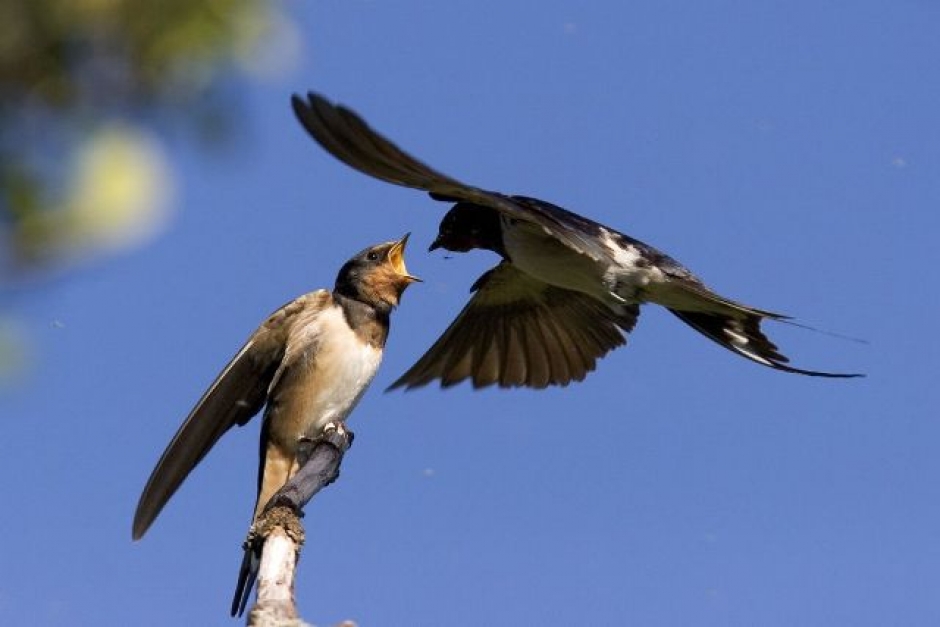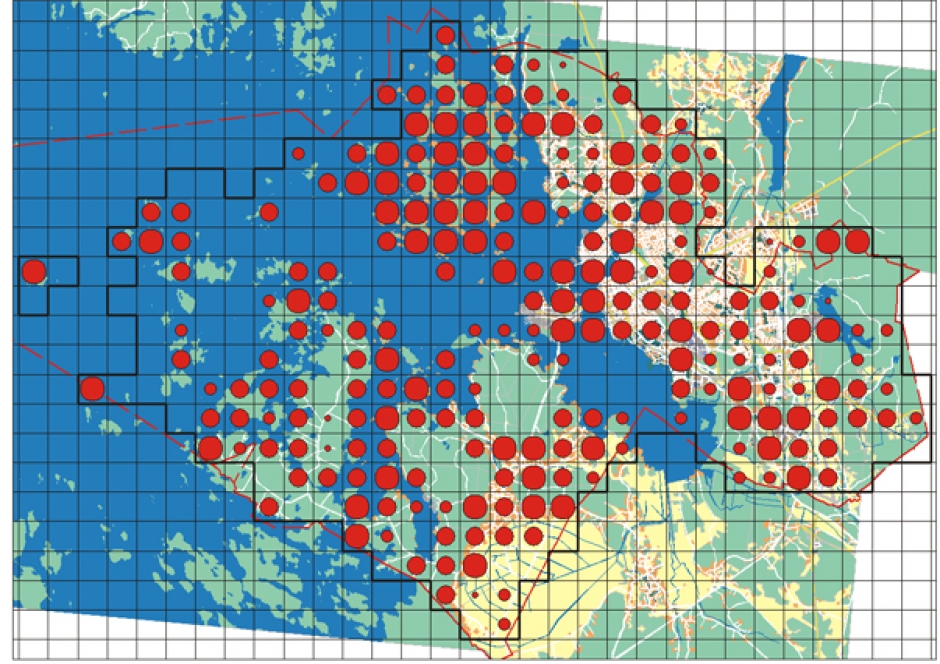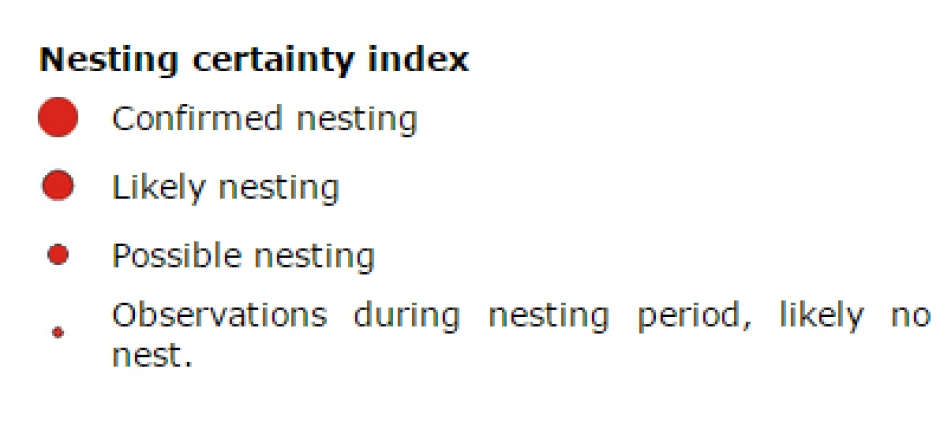Barn Swallow
Hirundo rustica

General information. The barn swallow is commonly found nesting in cultural landscapes and countryside environments. The nesting population has decreased by roughly 10% during the past few years. The decline is believed to have occurred due to changes in the agricultural environment and climate of the wintering areas in Africa. During the 21st century, the barn swallow has been subject to follow-up surveys regarding ringing in the European Union countries.
- Body is 17-21 cm, tail feathers 3 to 6,5 cm
- Nest is built under roof rafters, in barns, sheds or similar locations
- Winters in Central and South Africa
- Feeds on flying insects
Habitat. The barn swallow nests predominantly in locations that neighbor human settlements. In Vaasa, it can be found in the countryside, archipelago and urban areas. The nest may be built in the roof rafters of a building, along ridge poles of barns, in fishing cottages or barns, etc. Suitable nesting sites are also discovered by the barn swallow deep in the urban fabric, such as in the form of gasoline stations and particular residential buildings.
Distribution in Vaasa. The barn swallow is a bird species dwelling in built up areas. It was observed during the nesting season of June to August in over 200 survey blocks. It is a commonly occurring bird, particularly near countryside settlements and is an awaited seasonal guest, signaling that summer is on the horizon. Despite this, however, one individual swallow does not ultimately mark the beginning of the summer months. The first swallows may arrive already at the end of April during the final spring days, when frost conditions may still be present.


